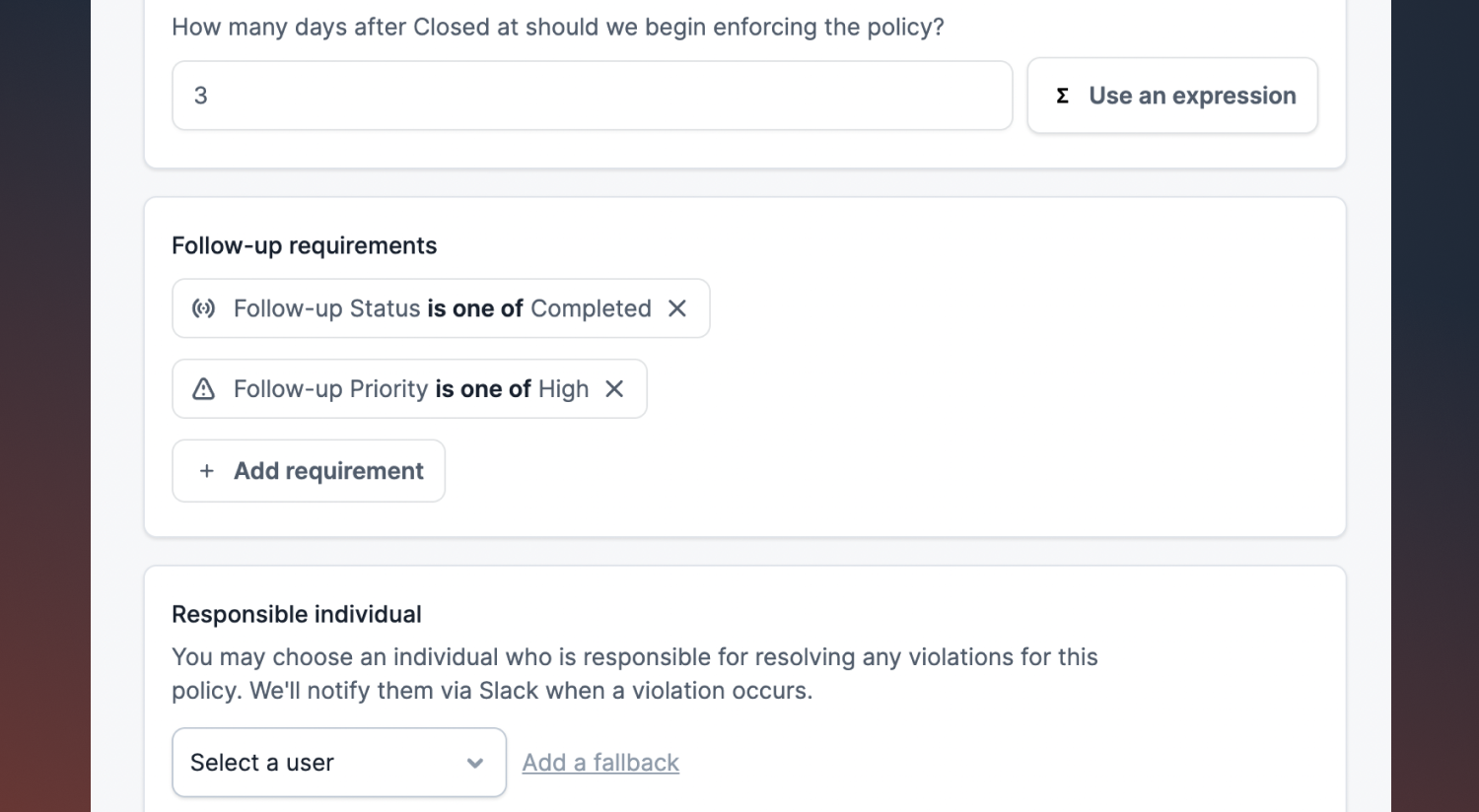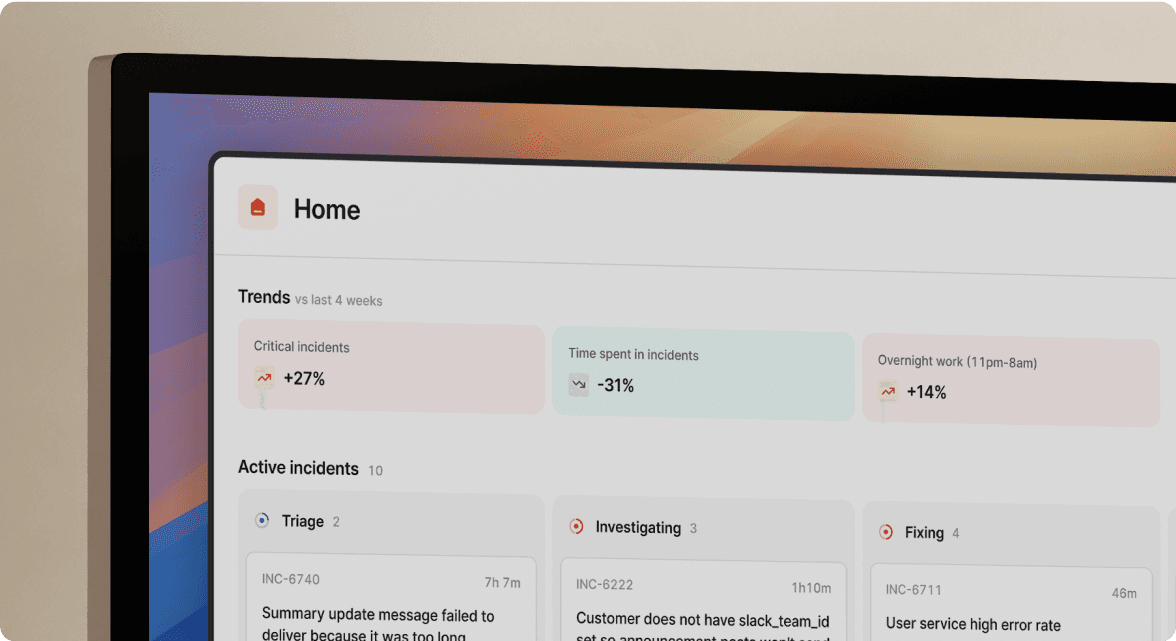Follow-ups, now with priorities
January 19, 2023

Follow-ups are a fantastic way to learn and improve from your incidents. So we’re expanding them with the concept of priorities.
Follow-ups which should be done urgently, such as reverting a temporary workaround can be assigned a critical priority. Whereas longer term follow-ups, such as migrating a service to a cloud provider could be assigned a lower priority. This allows your organization to track both short-term tactical improvements, in addition to longer-term strategic improvements.
These priorities are fully customisable to your organization’s needs, whether that’s P0/P1/P2, or High/Medium/Low.
Interplay with Policies and Workflows
The power of these priorities is unlocked once they’re combined with policies. A policy can be configured to say:
- “All critical follow-ups must be completed within 3 days”, or
- “All high priority and above follow-ups must be exported to our issue tracker”

Policies can be used to track your organization’s commitments, define SLAs, and check adherence to them. And now they can also be applied to follow-ups depending on their priorities. Policies then have the ability to be checked ad hoc, or delivered as a regular report. Allowing you to have visibility over all parts of your organization.
Follow-up priorities can also be combined with Workflows to perform actions based on the priority. For example:
- “All critical follow-ups should be automatically exported to our issue tracker”
So good, you’ll break things on purpose
Ready for modern incident management? Book a call with one of our experts today.

We’d love to talk to you about
- All-in-one incident management
- Our unmatched speed of deployment
- Why we’re loved by users and easily adopted
- How we work for the whole organization



